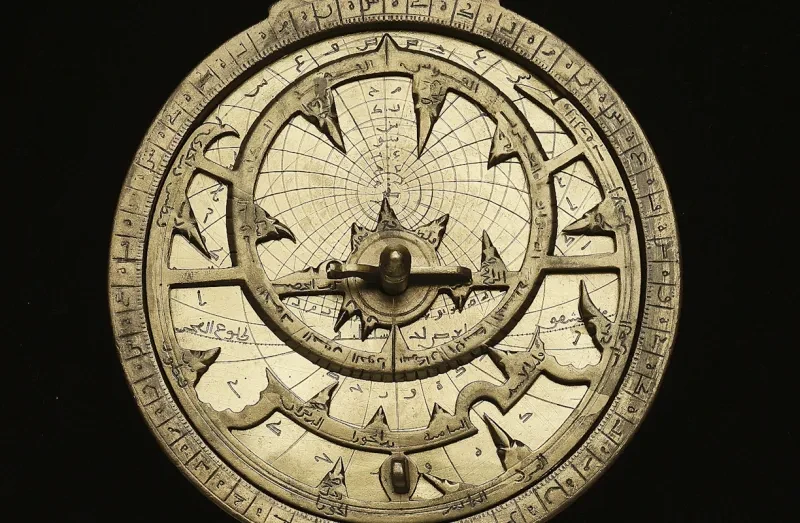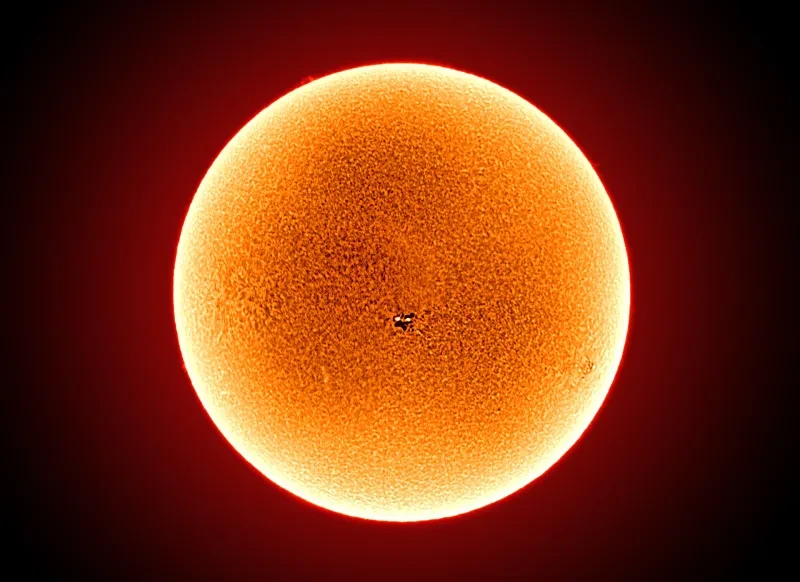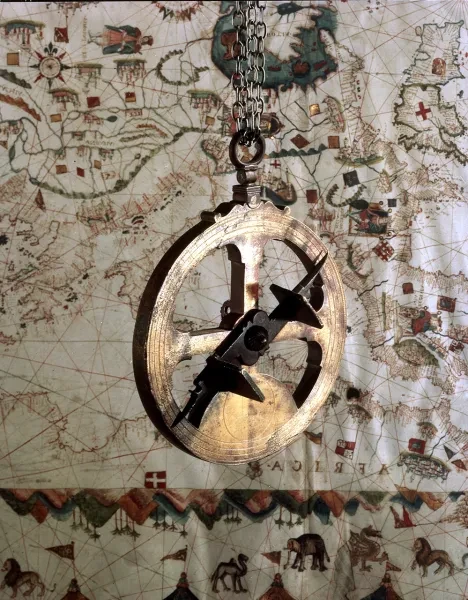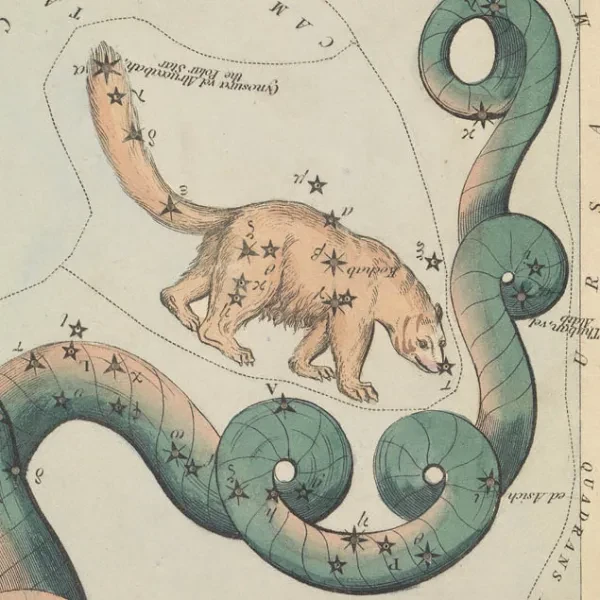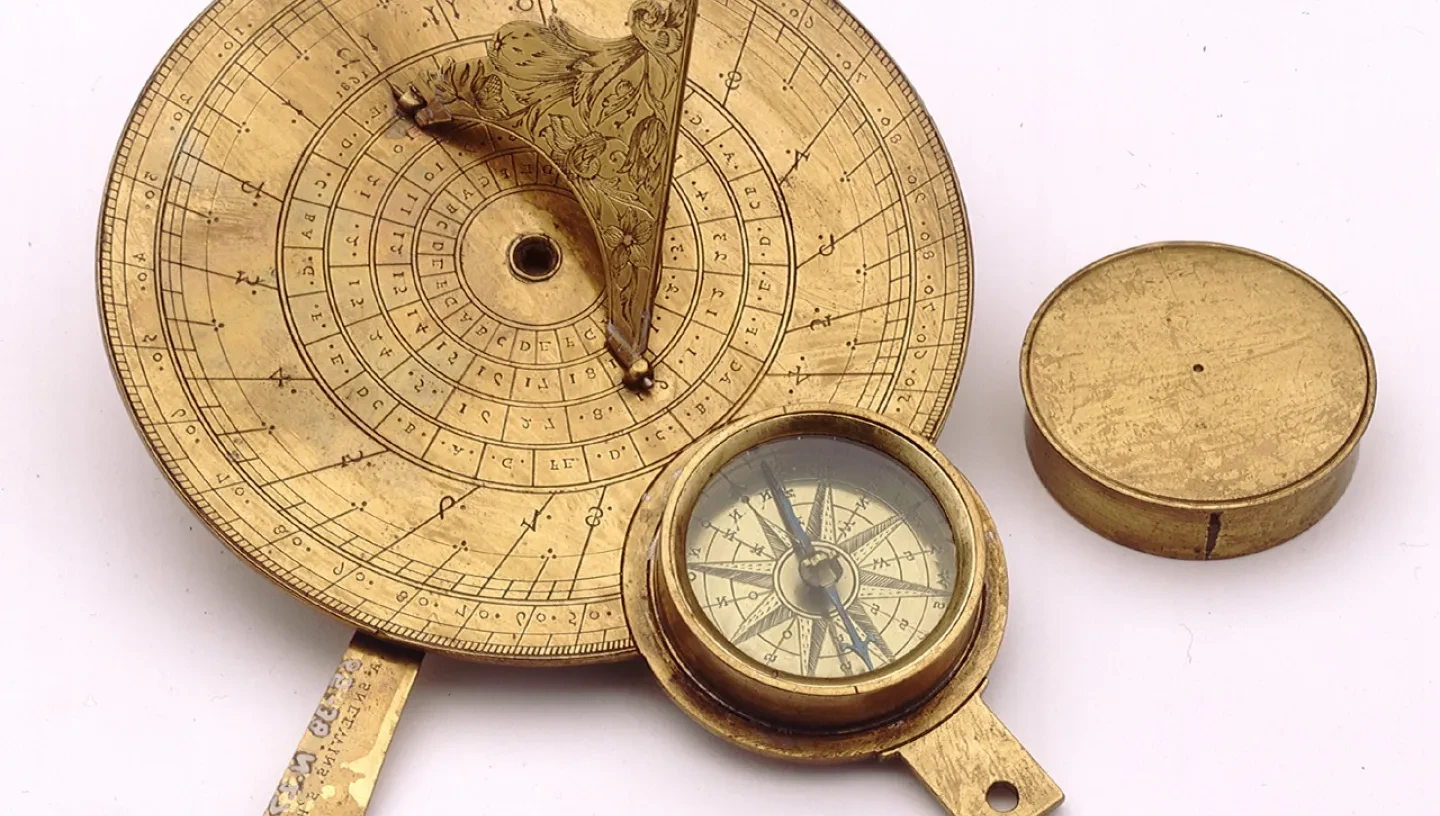
Learn more about the nocturnal or ‘nocturlabe’, used for centuries to tell the time based on the movement of the stars
Imagine you’re in a dark countryside location, away from city lights, on a clear starry night. At first, the stars appear motionless, but as you keep looking back up at the sky over several hours, you realise that they’re actually moving around a central point. Some observers use cameras and long exposures to capture stunning ‘star trails’ produced by the apparent movement of the stars.
But did you know that you can use this movement to tell the time? For centuries, people used an instrument called a ‘nocturnal’ or ‘nocturlabe’ to tell the time based on the motion/movement of the stars. Here at the Royal Observatory Greenwich we have a fantastic collection of nocturnals that you can see online and in-person in our displays. Scroll down to find out more about these historic timekeepers.
How do nocturnals work?
The nocturnal is based on the idea of circumpolar stars. The ‘circum-’ part refers to how they appear to rotate around or ‘circumnavigate’ the celestial poles, hence the last part, ‘-polar’. Circumpolar stars never set below the horizon at your latitude so they’re visible all the time, even during daylight hours.
Polaris is the star closest to the north celestial pole, the point lying directly above the Earth’s North pole. As the Earth spins on its axis, Polaris appears to be stationary while the other stars move around it in an anti-clockwise circle once every 23 hours, 56 minutes and 4 seconds (1 sidereal day).
If you’re based in Europe, around 40-60 degrees north latitude (London is 51.5°N), you can use this motion like a giant clock in the sky. There are two stars in the constellation of Ursa Major (the ‘Big Bear’), at the end of a group of stars known as the ‘Plough’ (or ‘Big Dipper’ in the US) that always point towards Polaris so we can use them like the hour hand to work out the number of hours with our nocturnal.
How to use a nocturnal
Here’s a step-by-step guide:
1. Move the small, short pointer to today’s date on the calendar scale around the outer edge
2. Face the northern part of the sky and hold up the instrument vertically
3. Align it carefully so that Polaris is visible through the central hole
4. Align the straight edge of the long pointer with the two pointer stars in the sky
5. Read off the time by the hours listed around the edge. You can count the number of hours in the dark by feeling the number of jagged teeth around the scale.
Have a look at this video made by our friends at the Museo Galileo in Florence, Italy:
When did people first start using nocturnals?
Nocturnals were used by mathematicians, astronomers and navigators during the period 1400-1800. The first printed description of the nocturnal (‘horologium noctis’ in Latin) appeared in 1524 in the astronomical textbook Cosmographia by the mathematics professor Peter Apian.
The reader was encouraged to cut out the diagram and glue the revolving plates onto wood or cardboard to make their own instrument. Navigators at sea used wooden versions of the nocturnal to help them measure their local time to within 15 minutes.
Who made these instruments?
Nocturnals were generally made during the period 1500-1700 by instrument makers across Europe, as seen by the maker’s signatures on some of the instruments in our collection:
1500s Eufrosino della Volpaia, Florence, Italy
1500s Falconi, Lombardy, Italy
1589 Amerigo Leonae, Italy
1600 Charles Whitwell, London, UK
1650-1670 John Browne, London, UK
1681 Anthony Sneewins, Delft, Netherlands
1693 Robert Yeff, Bristol, UK
Luxury versions were made from brass and were usually combined with other instruments such as sundials and lunar phases calculators to form a multifunctional device called a ‘compendium’, similar to a smartphone today with lots of different apps!
Simpler, cheaper versions were made from boxwood. Some versions also had extra scales added so they could be used with the pointer stars of Ursa Minor (the ‘Little Bear’) instead. This constellation is higher in the sky so it was more useful for navigators at sea when they were sailing towards more southerly latitudes such as the Canary Islands (28 N) where Ursa Major was more difficult to see.
Find out more
There are several museums across the UK that have nocturnals in their collections. Why not check your local museum too?
London Whipple Museum, Cambridge















